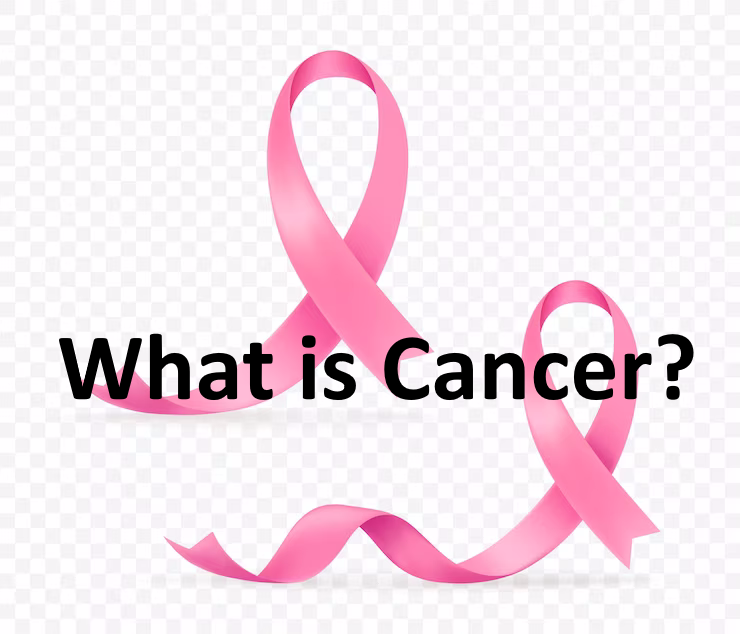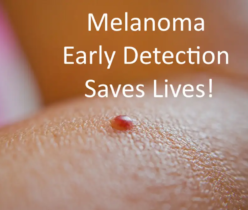Cancer is a complex and multifaceted disease that has been a subject of medical study for centuries. Derived from the Latin word for ‘crab,’ cancer encompasses a group of over 100 distinct diseases characterized by the uncontrolled growth and spread of abnormal cells. Understanding cancer involves exploring its origins, causes, classifications, impacts on the body, and the various treatment options available today. This article aims to demystify cancer by providing insight into its basic definition, the factors contributing to its development, and the strategies employed to combat it.
Key Takeaways
- Cancer is a term for diseases involving abnormal cell growth with the potential to invade or spread to other parts of the body.
- It originates at the cellular level and can form masses known as tumors, which may be benign or malignant.
- Risk factors for cancer include genetic predisposition, environmental exposures, and lifestyle choices.
- Cancer can be classified by its type, such as solid tumors or blood cancers, and by its stage and grade, which indicate its severity and progression.
- Treatment options for cancer vary and can include surgery, radiation, chemotherapy, targeted treatments, immunotherapy, and emerging therapies.
Understanding Cancer: The Basics

Defining Cancer
Cancer is fundamentally a disease of unregulated cell growth. Cells in the body are designed to grow, divide, and die in an orderly fashion. When this process breaks down, cancer begins to form. Instead of dying, these abnormal cells continue to grow and divide, leading to a mass of tissue known as a tumor.
Cancer can be thought of as a betrayal within our own cells, where they cease to follow the programmed path of growth and death, and instead, embark on a path of destruction.
Cancer is not a single disease but a collection of related diseases that can affect virtually any part of the body. This complexity is reflected in the numerous ways cancer can present itself, as well as in the challenges it poses for treatment. The World Health Organization describes cancer as a large group of diseases that can start in almost any organ or tissue of the body when abnormal cells grow uncontrollably.
- Malignant tumors can invade nearby tissues and spread to other parts of the body.
- Benign tumors do not invade nearby tissue and do not spread.
Understanding the nature of cancer is crucial for developing effective treatments and prevention strategies.
The Cellular Origin of Cancer
Cancer arises from a single cell that has undergone a series of mutations, leading to uncontrolled growth and division. These mutations can affect various genes, including oncogenes and tumor suppressor genes, which normally regulate cell growth and death.
- Oncogenes are genes that, when mutated, have the potential to cause normal cells to become cancerous.
- Tumor suppressor genes are responsible for slowing down cell division, repairing DNA mistakes, or telling cells when to die (a process known as apoptosis).
When these genes are altered, cells can grow uncontrollably and eventually form a tumor. The transformation from a normal cell to a cancerous one is a complex process that involves multiple steps:
- Genetic mutations occur.
- Cells begin to divide without control or order.
- Cells avoid death and continue to multiply.
- A tumor forms and may eventually spread.
The understanding of cancer at the cellular level has led to significant advancements in diagnosis and treatment, including the development of personalized medicine strategies that target specific genetic changes in individual tumors.
Common Misconceptions
When it comes to cancer, misinformation can be just as pervasive as the disease itself. Cancer cannot be transmitted from person to person like an infectious disease, debunking the myth that it is contagious. Additionally, the belief that cancer always has a fatal outcome is not accurate; many types of cancer are highly treatable, especially when diagnosed early.
Contrary to popular belief, lifestyle choices can significantly impact cancer risk. For instance, smoking and excessive alcohol consumption are well-known risk factors. Moreover, the idea that cancer ‘loves sugar’ is an oversimplification. While cancer cells consume more glucose than normal cells, simply cutting sugar from one’s diet is not a proven method to prevent or treat cancer.
It is crucial to approach cancer with a clear understanding, as misconceptions can lead to unnecessary fear or a false sense of security. Educating oneself about the realities of cancer is a vital step in prevention and early detection.
Lastly, the assumption that there are no measures to reduce cancer risk is unfounded. A healthy diet, regular exercise, and avoiding known carcinogens are all proactive steps one can take.
The Causes and Risk Factors of Cancer

Genetic Factors
Cancer can be influenced by genetic predispositions, where certain genes increase an individual’s likelihood of developing the disease. Inherited genetic mutations play a crucial role in approximately 5 to 10 percent of all cancers, often seen in familial cancer syndromes. These mutations can affect tumor suppressor genes, like RB and p53, or genes involved in DNA repair mechanisms.
While not all genetic mutations result in cancer, understanding one’s genetic risk can inform more personalized approaches to monitoring and prevention.
Genetic factors can be categorized as follows:
- Familial cancer syndromes: Inherited conditions that significantly raise the risk of certain types of cancer.
- DNA repair defects: Mutations that prevent the normal repair of DNA, leading to increased mutation rates and cancer risk.
- Gene amplification and point mutations: Changes that can lead to an overexpression of oncogenes or loss of tumor suppressor gene function.
It’s important to note that having a genetic predisposition does not guarantee the development of cancer, but it does necessitate increased vigilance and potentially more frequent screenings.
Environmental Influences
The environment plays a significant role in the risk of developing cancer. Exposure to certain chemicals, pollutants, and radiation can damage DNA and lead to cancerous changes in cells. For instance, research has identified disinfection byproducts in drinking water, such as 2,6-DHNPs, as potential carcinogens that are difficult to eliminate with standard water treatment processes.
Lifestyle choices, such as dietary habits and occupational exposures, also contribute to the cancer risk landscape. The concept of the exposome encompasses all environmental exposures throughout a person’s life, including diet, air and water pollutants, occupational hazards, and infectious agents.
While genetic factors are immutable, environmental and lifestyle factors offer avenues for intervention and prevention. Understanding and mitigating these risks can play a crucial role in reducing the incidence of cancer.
Here is a list of common environmental factors associated with increased cancer risk:
- Air pollution
- Exposure to asbestos
- Prolonged sun exposure (UV radiation)
- Secondhand smoke
- Industrial chemicals and solvents
Lifestyle and Cancer Risks
The choices we make in our daily lives can have a significant impact on our risk of developing cancer. A healthy lifestyle can be a powerful weapon in the fight against cancer. Factors such as tobacco use, alcohol consumption, dietary habits, and physical activity levels are all modifiable risk factors that can influence cancer risk.
- Tobacco use is the single largest preventable cause of cancer worldwide. Avoiding tobacco or deciding to quit smoking can drastically reduce the risk of several types of cancer.
- Alcohol consumption should be limited, as excessive drinking is a known risk factor for various cancers.
- Maintaining a healthy body weight and engaging in regular physical activity are important for reducing the risk of cancer.
- A diet rich in fruits and vegetables can provide antioxidants that may help lower cancer risk.
It’s never too late to adopt a healthier lifestyle. Making even small changes in daily habits can lead to significant health benefits over time, including a reduced risk of cancer.
Classifying Cancer: Types and Categories

Solid Tumors vs. Blood Cancers
Cancer can be broadly classified into two main categories: solid tumors and blood cancers. Solid tumors are masses of tissue that can arise in any organ, such as the breast, lung, or brain. They are characterized by a mass that can be seen and measured on imaging studies. On the other hand, blood cancers, such as leukemia and lymphoma, involve the proliferation of malignant cells within the blood or lymphatic system.
Blood cancers are often designated by specific terms that reflect their origin. For example, leukemias are a result of cancerous proliferation of white blood cells, and are named with the suffix ‘-emia,’ indicating a blood-related disorder. Lymphomas originate from lymphoid organs and are typically referred to as malignant when discussing cancerous lymphoid tumors.
While solid tumors are often more visually identifiable due to their mass-forming nature, blood cancers may not form tumors at all, instead affecting the body systemically through the circulatory or lymphatic systems.
It’s crucial to understand that both types of cancer can be aggressive and may lead to metastasis, where cancer cells spread to other parts of the body. However, the treatment and management strategies for solid tumors and blood cancers can differ significantly due to their distinct biological behaviors.
Malignant vs. Benign
When discussing tumors, the terms malignant and benign are crucial in understanding their nature and potential impact on health. Malignant tumors are cancerous, characterized by their ability to grow rapidly, invade surrounding tissues, and spread to other parts of the body, a process known as metastasis. In contrast, a benign tumor is a mass of abnormal cells that aren’t cancerous. These tumors usually grow slowly and don’t spread to other parts of the body.
Benign tumors, while abnormal, are less dangerous than malignant ones as they are not aggressive and do not invade or spread. In some instances, they may even retain functionality similar to the normal cells from which they originated.
However, not all tumors fit neatly into these categories. Some neoplasms exhibit behaviors that are difficult to predict, leading them to be classified as having “undetermined malignant potential,” or “borderline.” This highlights the complexity of tumor classification and the importance of detailed analysis for proper diagnosis and treatment planning.
Cancer Staging and Grading
After a cancer diagnosis, determining the stage and grade of the tumor is crucial for planning treatment. Staging is the process of finding out if the cancer has spread, and to what extent. It often involves several tests and scans, and it’s based on the size of the tumor, the involvement of lymph nodes, and the presence of metastasis. This is typically expressed in stages I through IV, with higher numbers indicating more advanced cancer.
Grading, on the other hand, refers to how much cancer cells differ from healthy cells under a microscope. A higher grade means the cancer cells look more abnormal and are likely to grow and spread more quickly. The grade helps predict the patient’s prognosis and can influence the choice of treatment.
The combination of staging and grading provides a detailed picture of the cancer’s aggressiveness and how it might behave. This information is vital for tailoring the most effective treatment strategy for each individual patient.
Here is a simplified overview of the staging system:
- Stage I: The cancer is small and contained within the organ it started in.
- Stage II: The cancer has begun to spread, but is still in the area it started.
- Stage III: The cancer has spread more extensively within the area it started.
- Stage IV: The cancer has spread to other parts of the body.
Understanding the stage and grade of cancer helps in setting realistic expectations and making informed decisions about treatment options.
The Impact of Cancer on the Body

Local Invasion and Destruction
Cancer’s ability to invade and destroy healthy tissue is a hallmark of its malignancy. The most threatening tumors are those that infiltrate major organ systems, disrupting their function and potentially leading to organ failure. This invasion is facilitated by the tumor’s access to the circulatory or lymphatic systems, allowing cancer cells to travel and seed in distant areas.
The local effects of tumor growth can vary depending on the tumor’s location, its functional activity, and the occurrence of acute events. These effects can range from mild discomfort to severe impairment of organ function.
The process of local invasion can be broken down into several stages:
- Presentation
- Precancerous stage
- The noninvasive stage
- Invasion and dissemination
Each stage represents a progression in the severity of the disease and a corresponding increase in the complexity of treatment required. Early detection and intervention are critical in preventing the transition from a localized tumor to one that is invasive and destructive.
Metastasis: The Spread of Cancer
Metastasis is a critical phase in the progression of cancer, marking the point at which cancer cells migrate from the original tumor to distant parts of the body. This process can lead to the formation of new tumors, known as secondary tumors, in vital organs, significantly complicating treatment and prognosis.
Breast Cancer is one of the cancers most known for its tendency to metastasize, particularly to the bones. This phenomenon, often referred to as bone metastasis, can result in additional complications and symptoms for the patient.
Metastasis fundamentally changes the approach to cancer treatment, as the focus shifts from localized therapy to systemic strategies that can address the widespread nature of the disease.
The following list outlines common sites where breast cancer may spread:
- Bones
- Lungs
- Liver
- Brain
Each site of metastasis presents its own challenges and symptoms, which may include pain, functional impairment, and further systemic effects.
Systemic Effects of Cancer
Cancer’s reach extends beyond the immediate vicinity of the tumor, impacting the body’s overall equilibrium. During oncogenesis, cancer not only escapes the body’s regulatory mechanisms, but also gains capabilities to affect local and systemic homeostasis. This disruption can manifest in various systemic effects that compromise patient health on multiple fronts.
The systemic effects of cancer can be profound, influencing numerous physiological systems and leading to a cascade of health issues. One significant area of concern is cardiovascular health. Cancer and its treatments can exert stress on the heart and blood vessels, potentially leading to cardiovascular complications.
The following points highlight some of the systemic effects of cancer:
- Altered immune system response, leading to both suppression and hyperactivation
- Hormonal imbalances that can affect metabolism and growth
- Nutritional deficiencies due to decreased appetite and increased metabolic demand
- Impact on mental health, including depression and anxiety
Understanding these systemic effects is crucial for comprehensive cancer care, as they can influence prognosis and quality of life.
Navigating Cancer Treatment Options

Surgery and Radiation Therapy
Surgery and radiation therapy are cornerstone treatments in the battle against cancer. Surgeons primarily remove cancerous tissue to completely excise the tumor. Following surgery, radiation therapy may be used to kill any remaining cancer cells and reduce the risk of the cancer coming back.
Radiation therapy is particularly effective for certain types of cancer, such as early-stage breast cancer, where it is often administered after surgical removal of the tumor. This combination approach ensures a comprehensive treatment, targeting both the primary site and potential microscopic disease.
The choice between surgery and radiation therapy, or the decision to use both, depends on multiple factors including the type, location, and stage of cancer, as well as the patient’s overall health and treatment preferences.
While both treatments are potent, they come with their own set of side effects and considerations. It’s crucial for patients to discuss the potential outcomes and risks with their healthcare provider to make an informed decision.
Chemotherapy and Targeted Treatments
Chemotherapy remains a cornerstone in the fight against cancer, utilizing powerful drugs to destroy rapidly dividing cancer cells. Although effective, chemotherapy’s inability to differentiate cancerous from healthy cells leads to significant side effects. Targeted treatments, in contrast, directly target specific molecules involved in tumor growth, offering a more precise approach with potentially fewer side effects.
Targeted therapies have revolutionized cancer treatment by focusing on blocking specific weaknesses within cancer cells, such as tyrosine kinase inhibitors, which are used in various cancers including some types of leukemia and breast cancer.
The choice between chemotherapy and targeted treatments often depends on the type and stage of cancer, as well as the patient’s overall health and treatment preferences. Here is a brief overview of the considerations:
- Type of Cancer: Certain cancers respond better to chemotherapy, while others are more amenable to targeted therapies.
- Stage of Cancer: Advanced stages may require a combination of both treatments.
- Patient Health: Underlying health conditions can influence the choice of treatment.
- Treatment Preferences: Some patients may opt for targeted treatments to avoid the side effects of chemotherapy.
Immunotherapy and Emerging Therapies
The revolutionizing cancer care strategies such as immunotherapy are transforming the landscape of cancer treatment. Immunotherapy, in particular, empowers the body’s own immune system to recognize and combat cancer cells, marking a significant shift from traditional treatments.
Emerging therapies, including gene therapy and molecular targeted therapy, are offering promising prospects. These treatments focus on the specific characteristics of cancer cells, aiming to block their growth and spread with precision.
The most promising area of progress in modern cancer therapy is the development of strategies that not only target the cancer itself but also enhance the body’s natural defenses against it.
While these advances are encouraging, they also underscore the need for ongoing research and development to fully realize their potential in cancer care.
Conclusion
In summary, It is a complex group of diseases with over 100 variations, each characterized by the uncontrolled growth and spread of abnormal cells. Originating from the Latin word for ‘crab’, the term cancer historically reflects the disease’s invasive nature, likened to a crab’s many legs.
Despite its ancient etymology, today’s understanding of cancer involves a deep knowledge of its mechanisms, including tumor formation, local invasion, and metastasis. While the battle against cancer continues, advancements in medical research offer hope for better detection, treatment, and prevention strategies.
It is a reminder of the importance of continued support for cancer research and the collective effort required to combat this multifaceted and pervasive disease.
Frequently Asked Questions
What is cancer?
Cancer refers to a group of more than 100 distinct diseases characterized by the uncontrolled growth of abnormal cells in the body, which can form masses called tumors and have the potential to invade and destroy healthy body tissue and spread to other parts of the body.
How does cancer originate in the body?
Cancer begins in your cells, which are the building blocks of your body. It can originate in many different parts of the body when cells begin to grow uncontrollably due to genetic changes or environmental influences.
What are the main causes?
The main causes of cancer include genetic factors, environmental influences such as exposure to carcinogens, and lifestyle factors such as smoking, diet, and physical inactivity.
What is the difference between benign and malignant tumors?
Benign tumors are non-cancerous growths that do not invade surrounding tissues or spread to other parts of the body. Malignant tumors are cancerous and can invade nearby tissues and metastasize, spreading to distant parts of the body.
What does metastasis mean in the context of cancer?
Metastasis refers to the process by which cancer cells break away from the original (primary) tumor and travel through the bloodstream or lymphatic system to form new tumors (secondary tumors) in other parts of the body.
What are the treatment options?
Doctors treat cancer through a variety of methods, including:
- Surgery: Removing tumors with an operation.
- Radiation therapy: Using high-energy rays to kill cells.
- Chemotherapy: Administering drugs to destroy cancer cells throughout the body.
- Targeted therapies: Precisely targeting specific genetic mutations in cancer cells.
- Immunotherapy: Boosting the body’s immune system to fight bad cells.
- Emerging therapies: Utilizing cutting-edge treatments under development.
Meta Description



